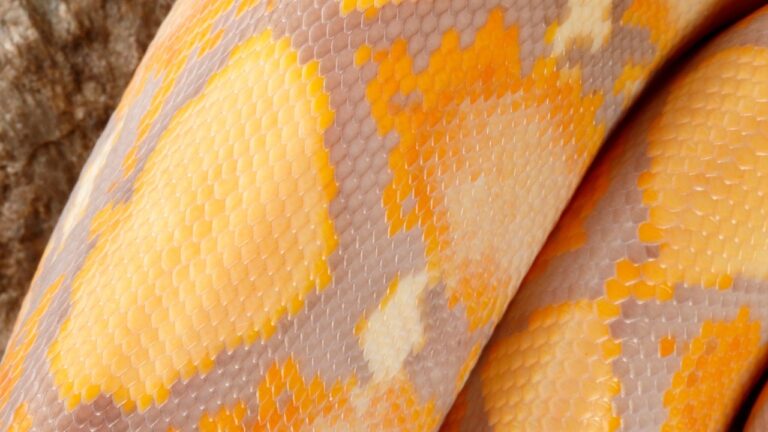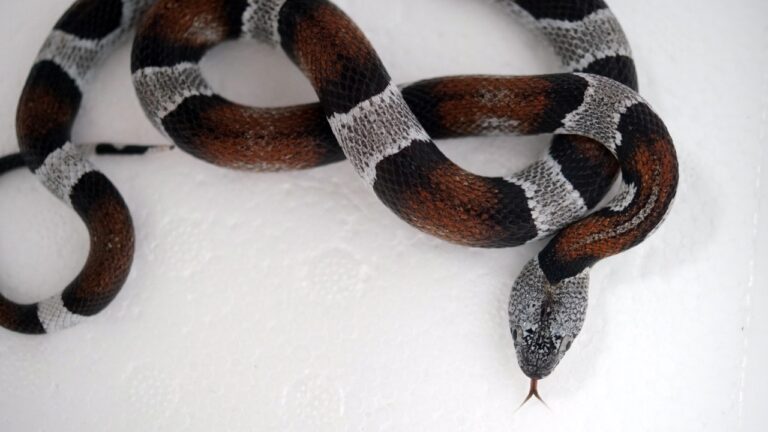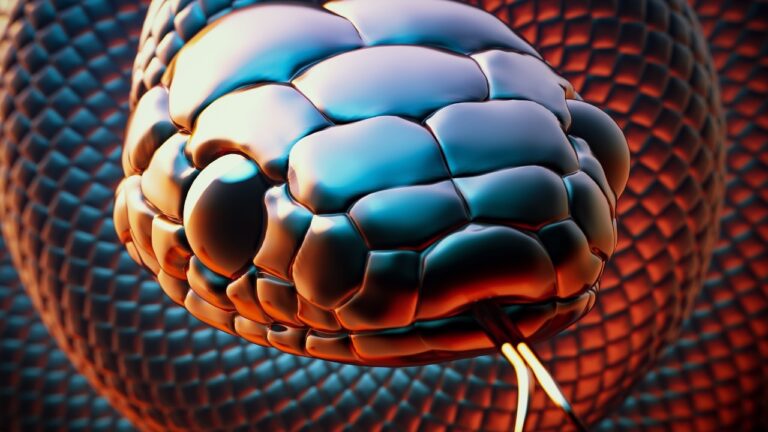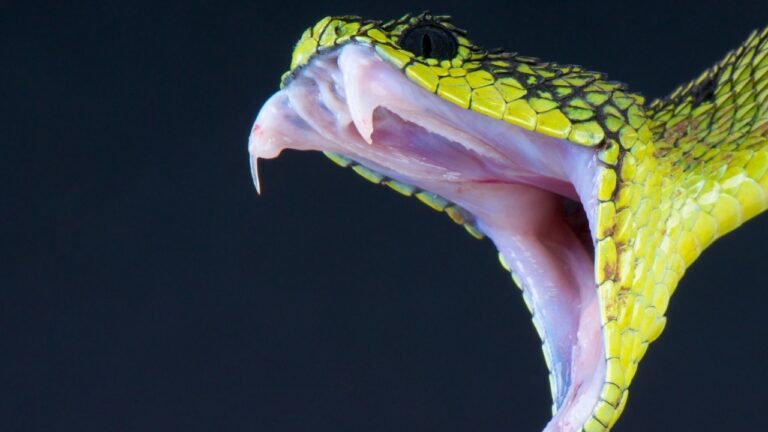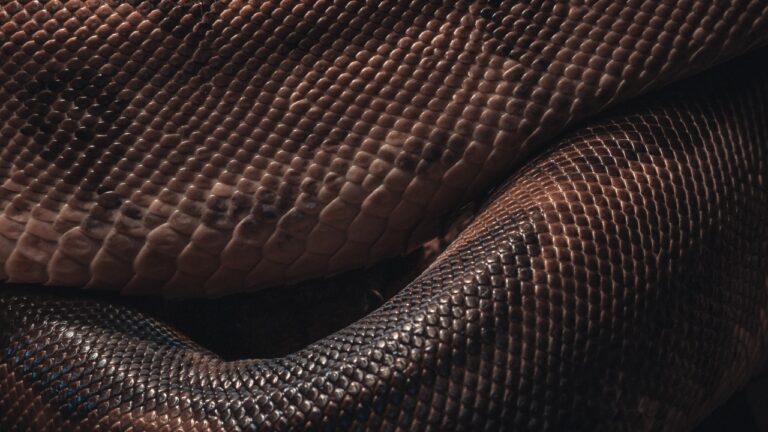Snake Prolapse Treatment: Expert Guide for Optimal Health
Overview of snake prolapse and its significance
When it comes to the health and well-being of our scaly friends, there are various conditions that can arise and require immediate attention. One such condition is snake prolapse, a potentially serious ailment that can affect snakes of all sizes and species. Understanding this condition and its significance is crucial for snake owners and enthusiasts alike.
Snake prolapse occurs when an organ, such as the cloaca or the hemipenes, protrudes from the vent area of a snake. This can be a distressing sight for any snake owner, as it indicates an underlying issue that needs prompt attention. The significance of snake prolapse lies in the fact that it can lead to further complications if not treated promptly and effectively.
There are several causes of snake prolapse, ranging from physical trauma to underlying health conditions. Improper handling or rough housing can cause damage to the delicate tissues surrounding the vent area, leading to prolapse. Additionally, constipation, straining during defecation, and internal parasites can also contribute to this condition. Therefore, it is crucial for snake owners to be aware of the potential causes and take preventive measures to minimize the risk.
Snake prolapse can manifest in different forms, depending on the organ involved. The two main types of snake prolapse are rectal prolapse and hemipenal prolapse. Rectal prolapse occurs when the rectal tissue protrudes from the vent, while hemipenal prolapse refers to the protrusion of one or both of the hemipenes in male snakes. Both types require immediate attention and appropriate treatment to prevent further complications.
Identifying the symptoms and signs of snake prolapse is vital for early intervention. Keep an eye out for swelling, redness, or inflammation around the vent area. If you notice any unusual protrusion or difficulty in passing waste, it may be an indication of prolapse. Additionally, snakes may exhibit signs of distress, such as restlessness, lethargy, or loss of appetite. Any of these symptoms should prompt immediate action to ensure the well-being of your snake.
In the following sections, we will delve deeper into the causes, types, symptoms, and treatment methods for snake prolapse. We will also explore the essential steps for post-treatment care and prevention strategies to help keep your snake healthy and thriving. So, let’s embark on this journey into the world of snake prolapse, armed with knowledge and a commitment to optimal snake health.
Understanding Snake Prolapse
Snake prolapse is a condition that can occur in these fascinating reptiles, and it’s important for snake owners and enthusiasts to have a comprehensive understanding of this ailment. By delving into the causes, types, and symptoms of snake prolapse, we can equip ourselves with the knowledge necessary to identify and address this issue promptly.
Causes of Snake Prolapse
Snake prolapse can arise from various factors, including physical trauma, infections, and internal abnormalities. One common cause is the excessive strain placed on the snake’s body during defecation. This strain can lead to the protrusion of organs such as the intestines, reproductive organs, or cloaca. Additionally, dehydration and constipation can contribute to the development of snake prolapse.
It’s worth noting that certain underlying health conditions, such as snake scale rot, snake mouth rot, or snake mites infestation, can weaken a snake’s bodily functions and increase the likelihood of prolapse. Therefore, maintaining a snake’s overall health is crucial in preventing this condition.
Types of Snake Prolapse
Snake prolapse can manifest in two primary forms: reproductive prolapse and cloacal prolapse.
Reproductive prolapse occurs when a female snake’s reproductive organs, including the oviducts or uterus, protrude from the cloaca due to strain or injury. This type of prolapse is commonly observed in snakes during the egg-laying process or after giving birth.
Cloacal prolapse, on the other hand, involves the protrusion of the cloacal tissue itself. The cloaca serves as the common opening for a snake’s urinary, digestive, and reproductive systems, making it susceptible to prolapse under certain circumstances.
Symptoms and Signs to Look For
Detecting the early signs of snake prolapse is essential for timely intervention. Some common symptoms to watch out for include:
-
Visible protrusion: The most apparent sign of prolapse is the noticeable protrusion of organs or tissue from the snake’s cloaca. This protrusion may appear red, swollen, or inflamed.
-
Straining during defecation: Snakes experiencing prolapse often exhibit increased effort or discomfort while attempting to pass waste. This may be accompanied by signs of pain or distress.
-
Excessive bleeding: Prolapse can cause the affected area to become susceptible to injury and bleeding. If you observe any bleeding, it is crucial to address the issue promptly to prevent further complications.
-
Lack of appetite and lethargy: Snakes with prolapse may exhibit a loss of appetite, reduced activity levels, and overall lethargy. These behavioral changes can be indicative of an underlying health issue.
If you notice any of these symptoms in your snake, it is vital to seek veterinary intervention immediately. A qualified veterinarian will be able to assess the severity of the prolapse and recommend the appropriate treatment plan.
Understanding the causes, types, and symptoms of snake prolapse is the first step towards providing optimal care for these incredible reptiles. By remaining vigilant and proactive in our approach, we can ensure the well-being and longevity of our slithery companions. In the next section, we will explore the immediate steps for snake prolapse treatment, which are crucial for minimizing further damage and discomfort.
Immediate Steps for Snake Prolapse Treatment
When faced with a snake prolapse, prompt action is crucial to ensure the snake’s well-being and prevent further complications. In this section, we will discuss the immediate steps that should be taken for snake prolapse treatment, including isolating the snake, keeping it calm, and preventing further damage.
Isolating the Snake
The first step in treating a snake prolapse is to isolate the affected snake from its enclosure and any other snakes it may be housed with. This is important to prevent any potential aggression or stress that could exacerbate the condition. Gently and carefully remove the snake from its habitat and place it in a separate, clean container or bag. Make sure the container is secure to avoid any unnecessary movement that could worsen the prolapse.
Keeping the Snake Calm
Once the snake has been isolated, it’s essential to create a calm and stress-free environment. Snakes are highly sensitive creatures, and stress can have a detrimental impact on their health. Handle the snake with extreme care, using slow and deliberate movements to minimize any additional stress. Avoid sudden noises or bright lights that could startle the snake and escalate its anxiety. Maintaining a calm atmosphere will not only help the snake relax but also facilitate the treatment process.
Preventing Further Damage
During a prolapse episode, it’s crucial to take immediate steps to prevent further damage to the snake’s organs and tissues. Gently support the prolapsed organ with a clean, damp cloth or sterile saline solution to keep it moist and minimize the risk of drying out. Avoid any excessive manipulation or force that could cause additional harm. If the prolapse involves the snake’s hemipenes (male reproductive organs), it’s important to be particularly cautious as these delicate structures can be easily injured.
Remember, time is of the essence when dealing with a snake prolapse. Seek veterinary assistance as soon as possible to ensure the snake receives the necessary treatment. In the next section, we will explore various snake prolapse treatment methods, including manual reduction, warm water soaks, and veterinary intervention.
Click here to learn more about snake scale rot
Snake Prolapse Treatment Methods
When it comes to treating snake prolapse, there are several methods that can be employed to help alleviate the issue and promote optimal health for the snake. These treatment methods aim to address the prolapse and prevent further complications. Let’s dive into the three main approaches used by experts in the field:
Manual Reduction
Manual reduction involves carefully manipulating the prolapsed organ back into its natural position. This technique should only be attempted by experienced individuals who are well-versed in snake anatomy and handling. It is crucial to approach this method with extreme caution to avoid causing any additional harm to the snake. Gentle pressure and precise movements are employed to guide the prolapsed organ back into place. Once successful, the snake should be monitored closely to ensure the prolapse does not recur.
Warm Water Soak
Another effective method for snake prolapse treatment is a warm water soak. This technique involves immersing the snake in lukewarm water, which helps relax the muscle tissue and reduce swelling. The warm water soak should last for approximately 20 minutes, allowing the snake’s body to gradually adjust to the temperature. This method can help alleviate discomfort and aid in the reduction of the prolapse. After the soak, it is essential to ensure the snake is thoroughly dried and returned to its enclosure.
Veterinary Intervention
In more severe cases of snake prolapse, veterinary intervention may be necessary. Veterinarians specializing in reptile care have the expertise and knowledge to provide the best course of treatment. They can perform more advanced techniques, such as using sutures or applying topical medications to aid in the reduction and healing process. Seeking professional veterinary assistance is crucial, as they can assess the overall health of the snake and address any underlying issues that may have contributed to the prolapse.
It’s important to note that snake prolapse can be a symptom of an underlying health condition. If the prolapse persists or recurs frequently, it is essential to seek veterinary advice to rule out any potential underlying issues. Regular health check-ups and proper husbandry practices can go a long way in preventing such complications.
By employing these treatment methods, snake owners and enthusiasts can provide the necessary care and support to their reptilian companions. Remember, proactive management and prompt intervention are key to ensuring the well-being and longevity of these incredible creatures.
For more information on common health issues that snakes may face, check out our articles on snake scale rot and snake mouth rot. Stay informed and stay connected to the world of reptiles!
Post-Treatment Care for Snake Prolapse
Once the immediate steps for snake prolapse treatment have been successfully carried out, it is crucial to focus on post-treatment care to ensure the snake’s optimal recovery and long-term health. This phase involves diligent monitoring, providing proper nutrition and hydration, as well as maintaining optimal temperature and humidity levels within the snake’s enclosure.
Monitoring the Snake
After the snake prolapse treatment, it is imperative to closely monitor the reptile to assess its progress and ensure that no complications arise. Vigilance is key during this period. Keep a keen eye out for any signs of discomfort, swelling, or abnormal behavior. If you notice any alarming symptoms, it is essential to seek veterinary guidance promptly.
Regular observation is necessary to verify that the snake’s cloacal area, where the prolapse occurred, is healing adequately. Inspect the area daily, looking for any signs of infection or tissue damage. Remember that the healing process can take time, so patience is crucial.
Providing Proper Nutrition and Hydration
A vital aspect of post-treatment care is ensuring that the snake receives proper nutrition and hydration. Nourishment plays a significant role in the reptile’s recovery and overall well-being. Consult with a reptile veterinarian or herpetologist to determine the most suitable diet for your snake’s specific species and condition.
Offer a variety of appropriate food items, such as mice, rats, or other prey suitable for the snake’s size and dietary requirements. Providing a balanced diet rich in essential nutrients will aid in the snake’s recovery and strengthen its immune system against potential ailments.
Hydration is equally important, as it facilitates the snake’s bodily functions and helps maintain optimal health. Ensure that a clean and accessible water source is always available within the enclosure. Regularly check the water to ensure cleanliness and freshness, replenishing it as needed.
Maintaining Optimal Temperature and Humidity
Proper temperature and humidity levels within the snake’s enclosure are critical for its post-treatment care. These environmental factors directly impact the reptile’s overall health and aid in its recovery process.
Monitor and maintain a consistent temperature gradient throughout the enclosure, providing a warm basking spot and cooler areas for the snake to regulate its body temperature. This temperature gradient allows the snake to thermoregulate effectively and aids in digestion and overall metabolic function.
Humidity levels should also be carefully managed. Different snake species have varying humidity requirements, so it is essential to research and understand the specific needs of your snake. Maintain appropriate humidity levels within the enclosure by utilizing a hygrometer to measure and adjust humidity when necessary. This will help prevent issues such as snake scale rot or respiratory conditions that may arise from improper humidity levels.
Remember that snakes are highly susceptible to various health conditions, including snake mouth rot, snake mites, snake inclusion body disease, snake septicemia, snake shedding problems, snake kidney disease, snake neurological disorders, and snake infectious stomatitis. By diligently monitoring the snake, providing proper nutrition and hydration, and maintaining optimal temperature and humidity, you can significantly reduce the risk of these potential ailments.
Final Thoughts
Post-treatment care for snake prolapse is a crucial step in the reptile’s recovery journey. By prioritizing monitoring, nutrition, and environmental factors, you ensure that the snake has the best chance of regaining its health and thriving in its habitat. Remember to consult with professionals for expert guidance tailored to your snake’s specific needs. With proper care and attention, your snake can overcome the challenges of prolapse and continue to live a healthy and fulfilling life.
Preventing Snake Prolapse
When it comes to the well-being of our slithering friends, prevention is always better than cure. By taking proactive measures, snake owners can significantly reduce the risk of snake prolapse, a distressing condition that can impact the health and quality of life of these magnificent creatures. In this section, we will explore some essential steps to prevent snake prolapse and ensure the optimal health of your scaly companions.
Handling snakes properly
One of the fundamental aspects of preventing snake prolapse is handling these reptiles with care and expertise. Improper handling techniques can put undue stress on a snake’s body, potentially leading to prolapse or other health issues. When picking up a snake, it is crucial to support its entire body, ensuring that no excessive pressure is exerted on its delicate organs. Gentleness and grace should be the guiding principles when interacting with these fascinating creatures.
Maintaining proper enclosure conditions
Creating a safe and suitable habitat for your snake is vital for its overall well-being. Ensuring proper enclosure conditions can help prevent the development of conditions that may contribute to prolapse. Adequate humidity and temperature control are essential factors to consider. Different snake species have specific environmental requirements, so it is crucial to research and provide the optimal conditions for your particular snake. Regular cleaning of the enclosure and monitoring for any signs of infection or infestation, such as snake scale rot or snake mites, is also essential.
To provide your snake with a comfortable and secure environment, it is important to offer appropriate substrates, hiding spots, and climbing opportunities. These elements not only enrich their lives but also help prevent injuries that could lead to prolapse. Remember, a happy and stress-free snake is less likely to experience health complications.
Regular health check-ups
Just like any other pet, snakes require regular health check-ups to ensure their well-being. Seeking veterinary care from a reptile specialist is essential for maintaining your snake’s optimal health and preventing potential problems, including prolapse. Regular examinations can help identify any underlying health issues and allow for early intervention. Additionally, veterinarians can provide invaluable guidance on proper nutrition and husbandry practices, further minimizing the risk of prolapse.
During these check-ups, the veterinarian may conduct various tests and screenings to assess your snake’s overall health. They may also discuss preventive measures for other common snake health issues, such as snake mouth rot, snake inclusion body disease, or snake respiratory infection. By staying proactive and vigilant, you can ensure your snake remains in peak condition, reducing the likelihood of prolapse and other complications.
In conclusion, preventing snake prolapse requires a combination of knowledge, care, and regular monitoring. By handling snakes properly, maintaining appropriate enclosure conditions, and scheduling regular veterinary check-ups, snake owners can provide their scaly companions with the best chance at a healthy and thriving life. Remember, a proactive approach is the key to preventing not only prolapse but also other potential health issues that can affect these fascinating creatures. So, let’s prioritize the well-being of our slithering friends and ensure they lead a happy, healthy life free from the perils of prolapse.
Final Thoughts
In conclusion, snake prolapse is a serious condition that requires prompt and appropriate treatment to ensure the optimal health and well-being of these remarkable creatures. By understanding the causes, types, and symptoms of snake prolapse, as well as the immediate steps for treatment and the various methods available, snake owners and enthusiasts can play a crucial role in facilitating the recovery of their beloved serpents.
While manual reduction and warm water soaks can be effective in mild cases, it is important to recognize the limitations of these methods and seek veterinary intervention when necessary. The expertise and knowledge of a qualified veterinarian can make a significant difference in the outcome of snake prolapse treatment.
Once the prolapse has been successfully treated, it is crucial to provide post-treatment care to ensure the snake’s continued well-being. This includes monitoring the snake closely for any signs of recurrence or complications, as well as providing proper nutrition, hydration, and maintaining optimal temperature and humidity levels within the enclosure.
Prevention is always better than cure, and snake owners should take proactive measures to prevent snake prolapse from occurring in the first place. This includes handling snakes properly, maintaining proper enclosure conditions, and scheduling regular health check-ups to catch any potential issues early on.
It is important to note that snake prolapse is just one of the many health concerns that snakes may face. Familiarizing yourself with other common snake ailments such as snake scale rot, snake mouth rot, snake mites, snake inclusion body disease, snake respiratory infection, snake septicemia, snake shedding problems, snake kidney disease, snake neurological disorders, and snake infectious stomatitis can help you become a well-rounded and responsible snake owner.
By staying informed and educated about snake health, we can ensure the well-being and longevity of these captivating creatures that have fascinated humans for centuries. So, let’s continue to appreciate and care for snakes, not only for their beauty and allure but also for their invaluable role in maintaining the delicate balance of our ecosystems.



